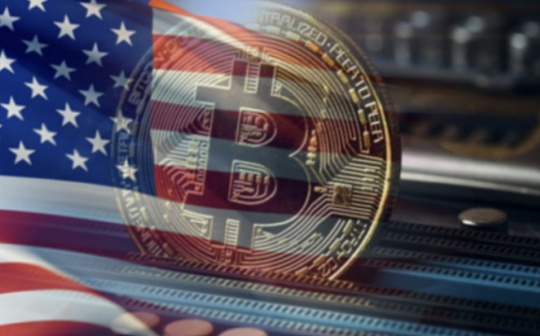Source: God and God strive together
Is US debt safe?
Last week, many investors who invest in global fixed + products were shocked. Why did they drop their returns in two months in one week? You should know that this type of product has always been stable, but it is not easy to make money. It really fits the old saying that describes fixed income products-“Making money is slow, losing money is fast”。
And this time the culprit is the US Treasury, which has always been considered a safe-haven asset.
What's even more terrifying is that there are many rumors -
King of Understanding is an enemy of the whole world, no one should do US debts anymore
We are going to fight a financial war with the ugly country, and the ultimate weapon is the US debt in our hands
King Dongwang wants to collect interest taxes from the governments of the countries that invest in government bonds around the world, and now everyone is selling...
It looks quite like that,Last week, the United States experienced a "three-kill of stocks, bonds and foreign exchanges", in the past, emerging markets that only appeared in the financial crisis, except for the sharp drop in long-term Treasury bonds, the US dollar index fell 3% last week, and the S&P 500 fell 9.08% last week.
If this is true, then the world will be in chaos.The status of US bonds and US stocks is completely differentAlmost all foreign currency wealth management products and QDII bond products hold more or less US Treasury bonds. The lower the risk product, the higher the proportion of US Treasury bonds. Therefore, many people in the "Taiwan Wealth New Thinking" circle asked me: What should I do if the financial management has not matured and cannot be redeemed?
I should first put the important conclusion clearly at the beginning:At least this won't happen at the moment, US Treasury bonds are still a safe variety.
Of course, these statements are not groundless. The current trading logic of US debt,From traditional safe-haven assets to the increase in credit risk in the United States, resulting in some US bonds being sold, reflecting the distrust of global investors (including local US) in the overall US policy,The status of US dollar and US bonds as risk-free assets is shaken。
It’s not that serious enough to collapse at this time. This article will talk about two important issues:
Question 1: Who is selling this U.S. debt crisis?
Question 2: Why don’t you have to worry about the safety of financial products with US bonds as the core for the time being?
First of all, we need to know,There has been a sharp drop in long-term U.S. bonds with more than 10 years of age, but in fact it has occurred in every financial crisis.。
Safe-haven assets in crisis
Bond investment looks very simple, but in fact, not only is the threshold high, but the deeper you do, the more you need the research foundation of economics. However, for ordinary investors, at the beginning, you only need to figure out a pair of counterintuitive concepts:
Bond prices rise, yields to maturity fall, investors make money
Bond prices fall, yields to maturity rise, investors lose money
This is mainly because the bond maturity price is fixed, and rising means the yield on maturity declines.
Articles that analyze bonds, some places use "return on maturity" and some places use "bond price". The directions of these two are completely opposite. If you really can't figure it out, remember this answer first, and you will understand it later.
After understanding the "counter-intuitive" relationship of bonds, you can return to the topic.
Generally speaking, treasury bonds are safe-haven assets, after all, they are guaranteed by the state's credit, soWhen the risk comes, the phenomenon of "bond maturity yield declines and bond prices rise" will first appear., there are two main reasons:
On the one hand, macro risks often lead to economic recessions, and theFunding demand decreases, interest rates decrease, and the central bank will lower policy interest rates to stimulate the economy;
On the other hand, the risk of bonds is smaller than that of stocks. When stocks fall sharply, there will beFunds transfer from stock market to bond market, pushing bond prices to rise and yields to maturity decline.
The yield on maturity of 10-year treasury bonds in my country in the past two years has dropped from above 3%, to a minimum of 1.59%, which reflects the first logic.
The same is true for sudden crises in the medium and short term. At the beginning of 2020, in the early stages of the outbreak of the epidemic, the yields of global government bonds all suddenly and significantly decreased. China's 10-year government bonds dropped from 3.2% to 2.4%, and the United States even dropped to 0.5%.
But above are mainly recession and ordinary crises. When the crisis reaches a certain level, it will be different later.
For example, the 10-year U.S. bonds during the outbreak of the epidemic in 2020, from the crisis in late February to the sharp deterioration of the crisis in early March. Driven by the economic recession and market risk aversion sentiment, investors bought a large number of U.S. bonds, causing a rapid decline in yields, falling below 0.5% for the first time, setting a record low - all of this is in line with traditional investment logic.
However, in the second week of March,As some investors settle profits and market expectations for policy stimulus have increased, 10-year U.S. Treasury yields have rebounded strongly, up about 40 basis points during the week, exacerbating losses among investors who avoided this - the same as last week.
In fact, most safe-haven assets have this characteristic.
The most typical safe-haven asset is gold. At the beginning of the 2020 crisis, it also rose all the way like this time, but it fell for 10 consecutive days from March 9, from $1,680 to $1,473. Many people avoided the decline of US stocks and fell in the hands of seemingly safe gold.
The yen is also a traditional safe-haven asset. In the early stages of the 2020 crisis, investors sought safe-haven assets to drive the appreciation of the yen. The US dollar appreciated sharply against the yen from 111.83 on February 21 to 103.08. However, since then, the tight US dollar liquidity has led to a "dollar shortage", and the yen depreciated rapidly to 111.71.
The dollar itself cannot escape the fate of big rises and big falls. The dollar index first fell from 99.9 to 94.63 on March 9, and then rose to 103 on March 20. However, on the 23rd, the Federal Reserve provided sufficient US dollar liquidity with unlimited QE, and then fell by four days to 98.34.
Assets with hedging attributes are not absolutely safe in crises, but mainly due to liquidity shocks. For example, the direct reason for the decline in US bonds last week was the forced closing of positions in "basis trading", which has occurred in previous crises.
Baseline trading and liquidity crisis
The so-called "basis trading" is to short the Treasury futures with premium while holding US bonds and earn this part of risk-free returns.
For example, at around 7:00 on April 14, the yield on the US 10-year Treasury bond was 4.44% (spot price), but the trading yield on the 2505 futures contract was 4.406% (futures price). Because of the cost of holding time,Generally, the futures rate of return is always smaller than the spot rate of return (that is, the futures price is higher than the spot price). This part of the higher part is called the "basis".
But when the delivery date, the prices of futures and spots will be integrated. In this process, either the spot yield drops or the futures yield rises. No matter how it goes,As long as the basis is returned to zero, "basis trading" means making a stable profit without losing.
Specifically, basis trading is divided into three steps: first purchasing treasury bonds (equivalent to shorting the spot yield of treasury bonds), and at the same time mortgage these treasury bonds to financial institutions, shorting the futures price with financing (that is, longing the treasury bond futures yield), and earning risk-free returns from the intermediate spread.
However, the basis is very small, so you have to open high leverage to have enough returns. In addition, it is basically risk-free returns, so treasury bond basis trading is generally leverage of more than 50 times.
In the normal market, there is a stable profit and no loss, but it is not certain when the financial crisis is coming.
Financial crisis usually occurs when stocks start to fall first, and many funds are leveraged. When they fall to a certain level, they must recover margin. Investors need to sell other investment products. Because at this time, treasury bonds generally rise and have profits, they often become the leading product on the platform.
If the crisis ferments and there are more people selling treasury bonds, the price of treasury bonds will fall rapidly, and the basis is lower than the repurchase rate. Stable profits will turn into stable losses. If the selling force is further increased, there may be a divergence between futures prices and spot prices. During this period, the goods and repurchase markets will require additional collateral. If the hedge funds cannot meet the requirements, the lender will confiscate the mortgaged treasury bonds and sell them to the market, triggering a further increase in bond yields and forming amplification of feedback.
The reason why basis transactions can be "stable" in normal times is that financial institutions bear liquidity costs in order to raise interest. Once the crisis breaks out, the cost will be greatly amplified, so naturally the transaction will not be established.
Therefore, the size of the liquidity impact can be judged by the difference between the implicit repurchase rate and the federal funds rate. Last Thursday, after Dongwang announced the suspension of peer tariffs for 90 days, the implicit repurchase rate of CTD was only 20-30 basis points higher than that of OIS.It is far lower than the extreme level of over 200 basis points in 2020 and is still within controllable.
In addition, it can also be judged from the interest rate spread between the 2-year treasury bond and the 10-year treasury bond, because the 2-year treasury bond is equivalent to cash, basically has no leverage, and is mainly held by foreign governments. The 2-year treasury bonds remain basically unchanged last week, and the maturity spread is widening, which also shows that the main reason for the decline in long-term bonds is the liquidity impact caused by ordinary trading institutions.
If it is just a liquidity impact, the Fed has too many tools. It can alleviate the overall liquidity pressure by relaxing bank leverage restrictions. The Fed will not make two mistakes in the same place. In 2020, the Fed even personally bought high-grade US bond ETFs for liquidity.
However, the market’s concerns are not unreasonable. The real crisis is not the decline in long-term debt, but the three kills of "stock, bonds and foreign exchange" - has this kind of "three kills" occurred before?
Taking the 2020 stock market crash as an example, the crisis began on March 21. In the first two weeks, US stocks and US dollar fell together, but US bonds rose; in the third and fourth weeks, 10-year Treasury bonds fell together with the S&P 500, but the US dollar index rose; in the last week, US dollar and US bonds fell together, but US stocks began to rebound.
There is always one of the three rising, reflecting the impact of liquidity. Funds hide in the east and west during the crisis, but have not left the US dollar system.
In particular, the two safe-haven funds, the US dollar and US bonds, fell together, and only happened four times in history, a total of seven days. Usually, after the liquidity crisis has been greatly alleviated, safe-haven assets flock to risky assets, but this time it is completely inconsistent.
“股债汇”三杀只说明一件事——There is funds leaving the US dollar system, such as gold, euro and yen that surged last week.Therefore, former Finance Minister Yellen used "crazy self-harm" to describe this tariff policy.
Many self-media began to think about whether from this time on, countries around the world left their dollar assets and the dollar empire collapsed?
But the same is true, the proportion of foreign funds sold is not high. The latest Federal Reserve custody data shows that foreign holdings of US Treasury only decreased by US$3.6 billion from April 2 to 9, and the average holdings of official departments are only 5 years, so the selling pressure may be limited.
In fact, there were only "three kills" on April 10th., US bonds began to fall on the 7th, and US stocks stopped falling that day. From a weekly perspective, US stocks actually rose 5.7% last week, without a "three-kill", which reflects more the characteristics of liquidity crisis.
So my answer is still very clear. Maybe one day in the future, but the conditions are not ripe now. The reason is the reason for this tariff war, and trade imbalance.
Can the RMB replace the US dollar?
Many netizens like to use "war thinking" to think about financial issues, but in the financial market, everyone faces a common enemy - risk.
China holds more than 700 billion US dollars in US bonds. Last year, against the backdrop of the prosperity of the financial market, it sold for a year and only sold more than 50 billion, less than 7%. If China launches an "attack" on US bonds, such as selling US bonds in a large number of short-term sales, it will inevitably trigger a sell-off from global investors, which will indeed cause US bonds to collapse, but in fact it cannot be sold much. It is all about smashing its own goods. These are the wealth accumulated by foreign trade companies for many years.
Moreover, China holds less than 2% of US debt, and a large number of US debts are in the hands of global investors. The collapse of US debt is equivalent to the collapse of the global financial market. The global economy has regressed for 20 years. For every 1% decline in global economic growth, the number of poor people will increase by 100 million and the number of deaths will increase by 1 million. This is no different from launching a war.
The actual situation is more complicated than imagined. If China's economy does not undergo major structural changes in the future, the proportion of US debt held will be difficult to compress.
This is mainly because, in international trade,What currency is used to settle in is usually determined by the buyerIf China's status as a global manufacturing center does not change, the surplus will definitely bring a large amount of US dollars. After a company sells foreign exchange to the central bank, the central bank cannot keep it in its hands. Because the US dollar has been depreciating, there is still more than 4% interest on buying US bonds. If you buy Japanese bonds, the yield will be only 1 point. The bonds in other countries are not issued enough at all.
Of course, you can also buy gold, but if everyone buys gold, the price of gold will rise to the sky, and interest-free assets are still there. US bonds have high interest rates to hedge fluctuations, and the fluctuations in gold are pure losses.
Also, where do you put it after buying gold? If you want to transport it back, the deficit country may not have that much in its hands. If it cannot be transported back, it means that your wealth is in the hands of other countries.
soThe root cause is the US dollar surplus in international trade, the United States is the big one, and everyone has to buy US bonds. China has held as few US bonds as possible.
This is the same as the debt in reality. A huge debt is often the creditor who wants to go bankrupt and the creditor does not want it to collapse.We are born to defenders of the international order, and this is not a matter of image, but a matter of interests.
So is it possible to unite with other countries and use other currencies in international trade?
Of course it is possible. Our country has been working hard, but the root of the problem is that we are producers, our production capacity is prepared for the world, and there must be a surplus. If settled in RMB, the RMB spent will be less than the one collected, but only we can issue RMB. The country now uses "currency swap" to solve this problem, but the amount is far from enough. Moreover, the currency of the country we value may not be willing to exchange, and we do not look down on the currency of the country we are willing to exchange. This is a paradox.
The problem with all lies in consumption. Only when you become a consumer, buy things with other countries and balance trade, can the RMB go abroad.
In the past, it was often said that Americans sent some money and moved all the real goods home, making a big profit. In fact, if such a good thing happened, this tariff war would not have happened. Everything has to pay a price. The government's fiscal deficit, the people's excessive debt consumption, widening gap between the rich and the poor, and the manufacturing industry are all the costs of the US dollar's international reserve status.
Therefore, the status of an international reserve currency is a result, not a goal of desire or effort.This time the euro appreciates the most, but are Europeans happy? Not because the EU has a large trade surplus with the United States, export competitiveness has declined. If the RMB starts to appreciate, our GDP will soon surpass the United States. The people who are eating melons are happy, but export companies are crying. Only when the US dollar appreciates, it is relatively not bad for the American people, because they are importers and consumer countries, and the prices are cheaper.
If the RMB wants to become a global reserve currency, we must become a consumer country. Once we become a consumer country, it is equivalent to replicating the current path of the United States., do we want to?
The problem is now very clear. The United States is unwilling to be a consumer only, so we also need to increase the domestic demand market and change accordingly. One day they found that the manufacturing industry could not be returned at all, prices could not be controlled, and tariffs were reduced again, so we should do business well. We need to increase our ability to adapt to the economic structure. The thinking of financial wars is just whimsical, not a solution to the problem.
4 suggestions for recent configuration
Finally, let’s talk about some practical financial investment:
First of all, the long-term debt crisis has not passedSince the market has seen that bonds are the "weakness" of King Zhi, they may be repeatedly attacked in the future, causing the volatility of bonds - mainly long-term bonds, but they will not break the upper limit and the crisis will not get out of control, because there are too many goods in the Fed toolbox.
Since the market has seen that bonds are the "weakness" of King Zhi, they may be repeatedly attacked in the future, causing the volatility of bonds - mainly long-term bonds, but they will not break the upper limit and the crisis will not get out of control, because there are too many goods in the Fed toolbox.
Second,When it comes to US dollar credit, it mainly depends on short-term debt.The fluctuations of long-term bonds are caused by their speculative nature. Short-term bonds are subject to the reality of "gravity", with less investment, less leveraged funds, and are relatively stable. In the stock market crash in March 2020, only short-term bonds fluctuations among all "help-haven funds".
Again, gold is not absolutely safe.Gold is the only safe-haven asset now (US short-term debt is half a piece), and funds are pouring into this direction, resulting in large-scale entry of speculative funds. But the safe asset chart is a safe one. If it rises too fast, it is insecure in itself. During the Chongqing bombing in the War of Resistance Against Japan, not many people left on the street were killed, and tens of thousands of people hiding in the air-raid shelter were suffocated to death due to lack of oxygen. Being "stolen" by safe assets is a typical phenomenon in liquidity crisis.
Finally, the Storm Center is temporarily safe. This time, the national team did not hide the fact that it was part of the political mobilization. It was just to show the market. It was similar to when a bank run, it puts the money on the counter and opens the withdrawal to build confidence among global investors.
Of course, not all A-shares are just a small number of indicator stocks.
















No comments yet